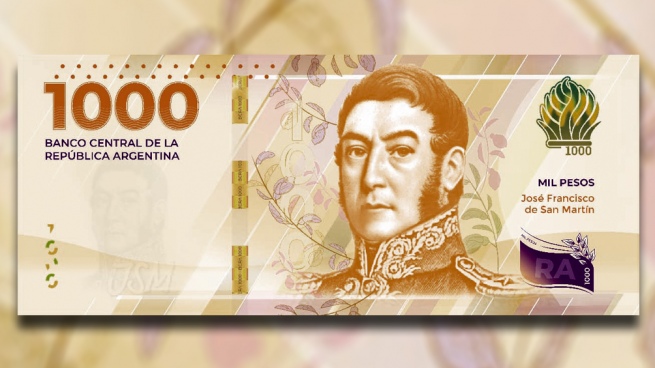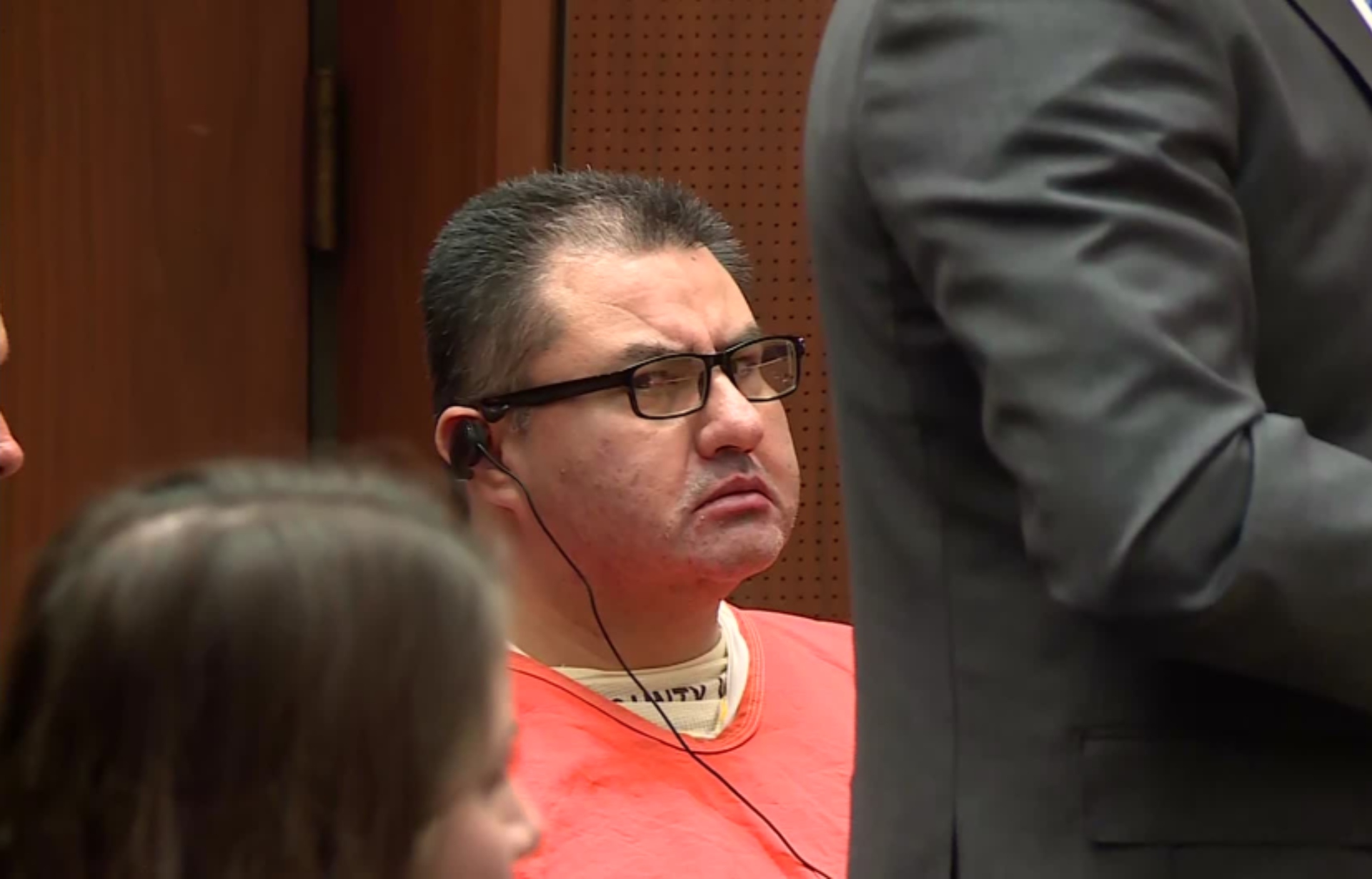The image of José de San Martín returns to an Argentine numismatics of which he is its main figure, with the presence in at least thirteen coins and 52 billsonce the new thousand-peso note goes into circulation.
The little more than two years of absence (the five pesos stopped circulating on February 29, 2020) were not the only period in which there were no bills or coins with the figure of the Liberator.
Between 1899 and 1935 the former Currency Board did not resort to the image of personalities to illustrate the national currency pesos and the Central Bank only in 1942 began to issue new bills, with a San Martin, who was an exclusive figure for 27 uninterrupted years.
To those 43 years without San Martín is added the first year of the peso law 18,188, with the exception that the resealed national currency pesos continued for a time, a practice that fifteen years later was reiterated in the transition from the Argentine peso to the Austral .
In the last 156 years, the image of San Martín on bills was 110, surpassing Manuel Belgrano, the second in number of presences in 16 opportunities.
In this way, in the last 156 years, the image of San Martín on banknotes was 110, surpassing Manuel Belgrano, the second in number of presences in 16 opportunities.
Télam resorted to the work that Marcelo Calniquer has been developing, a Systems engineer specialized in Information Technology who complemented his profession with his love of history in general and numismatics in particular.
From that combination came the most complete collection of banknotes and coins of what is now the Argentine Republic and dates back to the eighteenth century: www.billetesargentinos.com.arwinner of two Mate.ar awards, one in the Personal Pages category and the other in Historical Heritage.
The investigation verified that the first appearance of San Martín in the local numismatics was in 1866, sixteen years after his death and fifteen before the monetary unification with the national currency peso began.
It was a one-peso bill with a Bolivian silver backing, issued by the Bank of London and Río de la Plata, whose headquarters were in Rosario and which is the only one that shows the right profile of an elderly San Martín.
Also from 1866 and issued by the same bank dates an 8 strong peso note with the face of San Martín (16 strong pesos were equivalent to one ounce of fine Spanish gold); and the third San Martín prior to monetary unification dates back to 1869, when the Bank of the Province of Buenos Aires printed a 500 strong peso bill.
The peso national currency had its beginning in 1881, but it was necessary to wait two more years for the series of San Martinian banknotes to begin to be issued, with four different models of 500 gold pesos, one of them shared with Belgrano, the only one in history in which the two heroes do not have exclusive presence.
Two years later, the duet would be printed again on another 500 gold peso bill, different from the previous one by having another reverse (in the first there was an allegory of a woman with the Argentine flag and in the other a gaucho with horses).
The peso in force since 1992 had San Martín in four different versions of five-dollar bills.
As of 1888, through the law of guaranteed national banks, the issuance of pesos m/n (national currency) was authorized to the financial entity that made a gold deposit in the National Treasury. San Martín was there on the front of a 1,000-peso bill issued by the National Bank.
In 1895 San Martín appears for the tenth time, on a bill of 1,000 pesos m / nthe only one issued by the Currency Board and in circulation until 1899, when the period of absence of 43 years began, until 1943 when its figure monopolized the obverses until the arrival of the peso ley.
Two well-remembered banknotes date from those 27 years: the $m/n 5, “cocinero” (for “cooking”, five backwards) and the $m/n 1,000, popularly called “frigate” because it has on the back a the Sarmiento Frigate.
In 1950, on the centenary of his death, coins of 5, 10, 20 and 50 cents with his effigy were minted, first of a copper-nickel alloy and then of nickel-plated steel. The tributes were reiterated with other commemorative coins in 1978, for the bicentennial of his birth, and in 2000, 150 years after his death.
With the change of monetary sign, the Father of the Country had to wait a year to return in the 100-peso bill, although his absence was relative if one takes into account that five notes of the old national currency pesos continued to circulate with a emergency reseal.
The law weights had San Martín in ten different values: 50, 100, 500, 1,000, 5,000, 10,000, 50,000, 100,000, 500,000 and 1,000,000, the highest face value that has ever existed in Argentine history and the only one that reached seven figures.
In the coming months, after more than two years of absence, the image of San Martín will return, this time on a $1,000 bill.
The Argentine peso was the third monetary sign and had seven copies with San Martín, in bills of 1, 5, 10, 50, 100, 500 and 1,000.
When the austral arrived, in addition to two resealed notes, the face of San Martín was in the denominations of 10,000, 50,000 and 500,000.
The peso in force since 1992 had San Martín in four different versions of five-dollar bills.: three with Cerro La Gloria on the reverse (one green, one green and purple, and the third, in 2002, without the legend “legal tender convertibles”) and a fourth with Artigas, Bolívar and O’Higgins.
In the coming months, after more than two years of absence, the image of San Martín will return, this time on a $1,000 bill.
One by one, the 52 bills of Saint Martin
The image of José de San Martín was present in at least thirteen coins and, counting the one that will be issued in the coming months, 52 banknotes, in 156 years.
Based on the research carried out by Marcelo Calniquer, Télam was able to collect the banknotes and coins in which San Martín is present, from the first of 1866 to the one that will probably be issued before the end of 2022.
The list of the 52 tickets is as follows:
1.- 1 Bolivian Silver Peso (1866), issued by the Bank of London and Río de la Plata (Rosario).
2.- 8 strong pesos (1866), issued by the Bank of London and Río de la Plata (Rosario).
3.- 500 Pesos Fuertes (1869), issued by the Bank of the Province of Buenos Aires.
4.- 500 Pesos National Gold Coin (1883) with image of a woman on the reverse, issued by the National Bank.
5.- 500 Pesos National Gold Coin (1883) with image of explorer and indigenous people on the reverse, issued by the National Bank.
6.- 500 Pesos National Gold Coin (1883) with image of the crossing of the Andes on the reverse, issued by the National Bank.
7.- 500 Pesos National Gold Coin (1883) together with Manuel Belgrano, with an allegory of a woman with a flag on the reverse, issued by the Bank of the Province of Buenos Aires.
8.- 500 Pesos National Gold Coin (1885) together with Manuel Belgrano, with horses and a gaucho on the reverse, issued by the Bank of the Province of Buenos Aires.
9.- 1,000 Pesos National Coin (1888), issued by the National Bank.
10.- 1,000 Pesos National Currency (1895), issued by the Currency Board in the name of “La Nación Argentina”.
11.- 5 Pesos National Currency (1960/1962).
12.- 10 Pesos National Currency (1942/1969).
13.- 50 Pesos National Currency (1942/1969).
14.- 100 Pesos National Currency (1943/1969).
15.- 500 Pesos National Coin (1944/1968), with the Grand Bourg house on the reverse.
16.- 500 Pesos National Coin (1942/1969), with the Central Bank on the reverse.
17.- 1,000 Pesos National Currency (1962/1969).
18.- 5,000 Pesos National Currency (1962/1969).
19.- 10,000 Pesos National Currency (1961/1969).
20.- 1 Peso law 18,188 (100 pesos national currency reset).
21.- 5 pesos law 18,188 (500 pesos national currency reset).
22.- 10 Pesos law 18,188 (1,000 pesos national currency reset).
23.- 50 Pesos law 18,188 (5,000 pesos national currency resealed).
24.- 100 Pesos law 18.1888 (10,000 national currency reset).
25.- 50 Pesos Law 18,188 (1971/1978).
26.- 100 Pesos Law 18,188 (1971/1978).
27.- 500 Pesos Law 18,188 (1972/1982).
28.- 1,000 pesos law 18,188 (1973/1983).
29.- 5,000 pesos law 18,188 (1976/1983).
30.- 10,000 pesos law 18,188 (1976/1983).
31.- 50,000 pesos law 18,188 (1978/1983).
32.- 100,000 pesos law 18,188 (1979/1983).
33.- 500,000 pesos law 18,188 (1980/1983).
34.- 1,000,000 Pesos Law 18,188 (1981/1983), with an image of the May Revolution on the reverse.
35.- 1,000,000 Pesos law 18,188, with image of Salto Grande on the back (it did not enter circulation).
36.- 1 Argentine Peso (1983/1985).
37.- 5 Argentine Pesos (1983/1985).
38.- 10 Argentine Pesos (1983/1985).
39.- 50 Argentine Pesos (1983/1985).
40.- 100 Argentine pesos (1983/1985).
41.- 500 Argentine pesos (1983/1985).
42.- 1,000 Argentine pesos (1983/1985).
43.- 1 Austral (1,000 Argentine pesos reset, 1985/1991).
44.- 10 Australes (10,000 Argentine pesos reset, 1985/1991).
45.- 10,000 Australs (1989/1991).
46.- 50,000 Australs (1989/1991).
47.- 500,000 Australs (1990/1991).
48.- 5 convertible pesos (green color, 1992/2002).
49.- 5 convertible pesos (green-purple color, 1998/2002).
50.- 5 Pesos (the legend “legal tender convertibles” is deleted, 2002/2020), with Cerro La Gloria on the reverse.
51.- 5 Pesos (2012/2020), with Artigas, Bolívar and O’Higgins on the reverse.
52.- 1,000 pesos (coming soon).
For their part, these are the thirteen coins minted:
1.- 5 Centavos (1950, nickel-plated steel).
2.- 5 Centavos (1950, copper and nickel).
3.- 10 Centavos (1950, nickel-plated steel).
4.- 10 Centavos (1950, copper and nickel).
5.- 20 Centavos (1950, nickel-plated steel).
6.- 20 Centavos (1950, copper and nickel).
7.- 50 Centavos (1950, nickel-plated steel).
8.- 50 Pesos Law 18,188 (1978/1981).
9.- 50 Pesos law 18,188 (commemorative, 1978).
10.- 100 Pesos Law 18,188 (1978/1981).
11.- 100 Pesos law 18,188 (commemorative, 1978).
12.- 50 convertible peso cents (commemorative, 2000).
13.- 5 convertible pesos (commemorative, 2000).









